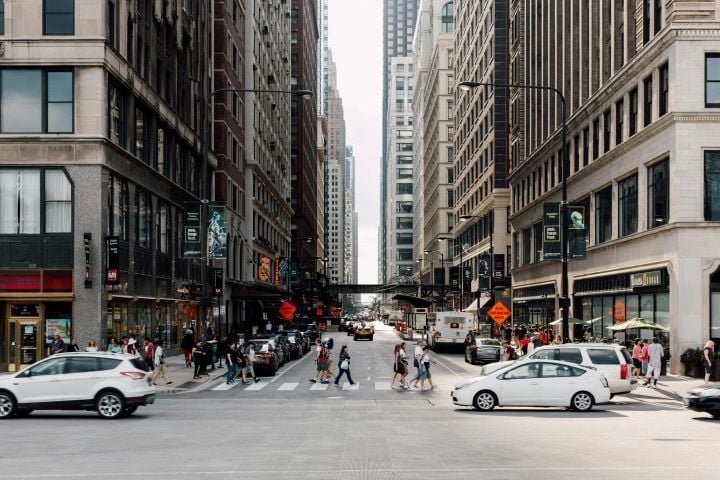
Pedestrian and cyclist traffic deaths have surged 80% and 75%, respectively, since 2009 and now account for almost a fifth of traffic fatalities.
IMAGE: Pexels/Josh Sorenson
In the ongoing debate about whether to keep daylight saving time, a new study shows that there are fewer pedestrian and cyclist road deaths with the annual springing forward in most of the U.S.
The Insurance Institute for Highway Safety report, though, indicates the time switch has little net effect on overall traffic fatalities.
Despite that, the nonprofit says preventing nonmotorist traffic deaths is important because that’s the segment of fatalities that’s growing fastest.
IIHS studied traffic fatalities data for the five weeks before and after all time changes from 2010 to 2019, targeting the times of day whose light levels were affected by the change and examining the crashes during those hours.
With the fall-back time change in the autumn, vehicle occupant deaths dropped and pedestrian and cyclist deaths increased, but with the spring-forward change with daylight saving time, the effect was reversed. Overall, with both time changes taken into account over the time period, there were 29 more vehicle occupant fatalities and 26 fewer pedestrian and cyclist traffic deaths.
IHHS theorizes that disrupted sleep patterns or rushing due to being late may factor in the vehicle occupant deaths while changing light patterns could affect the pedestrian and cyclist fatalities, as most pedestrian deaths happen after dark.
Since pedestrian fatalities hit an all-time low in 2009, they’ve surged 80% while cyclist traffic deaths have jumped 75%, and the two groups now account for almost a fifth of traffic fatalities, the nonprofit said.
“Although daylight saving time doesn’t seem to be an unequivocal safety win, this study reinforces the importance of visibility for preventing pedestrian and bicyclist crashes,” IIHS President David Harkey said. “Better lighting, especially at crosswalks, improved headlights, and reflective or light-colored clothing can help protect people when the sun goes down — whatever time that may be.”














